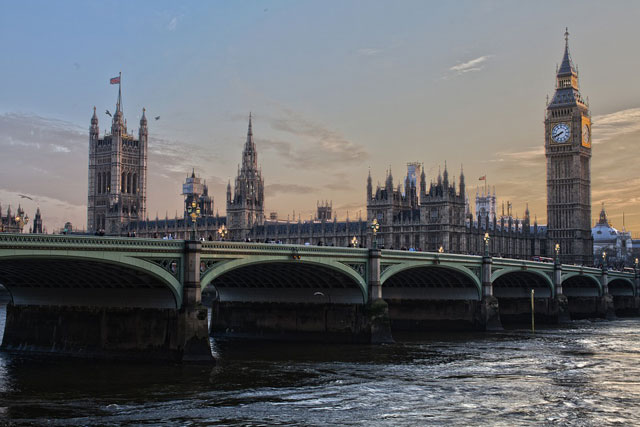The UC Guide to Brexit: Two Years on

Two years have passed since the momentous Brexit referendum of 23 June 2016, an advisory vote on whether the UK should revoke its membership of the European Union (EU), which the Leave camp won with 52% of the vote against 48% for Remain.
There is little information in the Australian media about where Brexit stands today. Some believe Brexit has stalled, or that it is no longer going ahead. Others, still, believe it will happen but a compromise will have to be reached between ideals of a ‘hard Brexit’ and the reality of a ‘soft Brexit’. It is timely then to take stock of what progress, if any, has been made towards the UK’s withdrawal from the EU in the last two years.
UC Associate Professor of Government and Policy, Dr Ben Freyens, breaks down the last two years.
What is 'hard' Brexit and what is 'soft' Brexit?
Hard Brexit, long the government's favoured option, consists of a complete withdrawal from the EU, in which the UK pulls out of the EU customs union, the single market, subjection to the European Court of Justice (ECJ) for trade disputes and no longer contributes to the EU budget. A 'no deal Bexit' whereby the UK exits without any form of free trade agreement or even a preferential trade deal for some of its key industries is the most extreme version of hard brexit.
Soft Brexit, favoured by Labour and Tory 'Rebels', is a compromise whereby some desirable benefits of EU membership are retained (e.g. the customs union, or EU regulation deemed helpful to UK industry) whereas other aspects are rejected (e.g. freedom of movement for EU citizens or subjection to ECJ rulings). There is no clear consensus as to what constitutes soft Brexit. A Norwegian model (the European Economic Area - EEA model) is sometimes out forward. Norway (together with Iceland and Liechtenstein) is not an EU Member State, has not joined the EU customs union, and is not subjected to ECJ rulings but it collaborates closely with EU institutions and has joined the single market and the Schengen area.
The UK has repeatedly stated that it is not interested in a Norwegian solution.
Is Brexit still going ahead?
Yes. In fact, the British parliament has just passed the EU Withdrawal Bill (on 20 June 2018), after 6 months of internal wrangling. The House of Commons, where the Conservatives – or Tory Party – hold a majority had endorsed the bill in January 2018, but the House of Lords sought to amend the proposed bill no less than 15 times between January and June before, at times supported by Tory Rebels in the Commons, before finally approving the bill on 20 June. Theresa May’s government will now seek Royal assent for the bill, which will soon become the EU Withdrawal Act 2018.
When will Brexit happen?
On 29 March 2019, at 11.00PM precisely. Article 50 of the Treaty of European Unification (The Maastricht Treaty, rev. 2009) specifies that upon notification of the decision to withdraw, EU Treaties cease to apply either immediately or within 2 years of the notification. The UK government triggered Article 50 on 29 March 2017 and so it has until 29 March 2019 to complete its withdrawal unless an extension is requested and granted. Few believe an extension will be requested: all stakeholders see the 29 March deadline as an important catalyst to converge on an exit deal.

What happened after the Brexit vote?
The referendum led to the resignation of the then British PM, David Cameron, in early July 2016. The Tories held a leadership ballot, which Theresa May, the Home Secretary since 2010 and a pro-Remain MP, won over several pro-Leave candidates. She ran on a campaign of party unity and Brexit implementation (her catchcry was and remains “Brexit means Brexit” by which she means Brexit must be implemented with no or little compromise). She announced that her Government needed time to prepare departure negotiations and would not trigger Article 50 before 2017.
Following the withdrawal notification of 29 March 2017, Theresa May appointed a Brexit negotiation team, led by pro-Leave and former Tory MP David Davis, to start talks on an exit deal with the EU team. Soon after the start of the talks, Therese May called an election for 8 June 2017, seeking a strong mandate for the negotiations. Although her party saw a positive swing of 5 percent, it nonetheless lost 13 seats and its majority in the Commons.
The Labour opposition was more fortunate, experiencing a larger positive swing of 10 percent and gaining 30 seats. Given the positive swing, the election result is best interpreted as bad luck rather than a voter rebuke for Theresa May who is now leading a minority Government (controlling the House of Commons with the support of the 10 MPS from Northern Ireland’s DUP’s Party).
Has there been any progress at all towards Brexit?
Since the June 2017 election, some progress has been made between UK and EU negotiators through several EU summits. On 7 December 2017, an agreement had been reached on several important issues:
- Status of EU citizens living in the UK: EU citizens will register and apply for settled status giving them the same rights as UK citizens and a potential pathway for UK citizenship
- The divorce bill: EU budgets are programmed for 7 years and the UK withdrawal will leave a hole for several years. Initially the UK refuses to settle any bill but it has now agreed to its principle (the amount remained to be agreed but estimates run at ₤36bn)
- The Irish border question: initially the May government did not recognise the implications of its ‘backstop’ solution (a hard border). It has now acknowledged the importance of the issue, which can only be accommodated by remaining in the customs union.
- The transition period: trade negotiations cannot take place as long as the UK remains in the EU. They will therefore take place after 29 March 2019 during a transition period, which will last until 31 December 2020.
Is the Brexit referendum binding?
No. Unlike most EU nations, which have binding referendums in their constitution, the UK does not have a codified constitution, its legal system resting on the common law. So, the binding nature of a referendum depends on the conditions stated in the underlying Act that authorises the referendum. The EU Referendum Act 2015 provides no guidance on whether the Brexit vote should be binding so the UK government is free to interpret the referendum as binding or advisory only.

Is Brexit still popular in the British population or is there a change of public opinion?
Regular polling indicates that about one quarter of Labour voters who voted Leave would vote differently if a 2nd referendum was held today.
This would probably be sufficient to tip the balance back towards a Remain decision if a vote was held now (June 2018). However, the UK population remains evenly divided on the Brexit question. The predicted result of a 2nd vote remains sufficiently close to 50-50 that few UK politicians would currently feel encouraged to support a 2nd vote.
Have the likely costs and benefits of Brexit been estimated?
The UK Treasury, the London School of Economics and academics from other UK universities have produced numerous estimates for the cost of Brexit. The costs of Brexit consist of lost GDP due to
- Reduced or lost exports due to loss of exchange (particularly in services)
- Reduced or lost investment due to business and regulatory uncertainty
- Reduced productivity due skill shortage and reduced transfers of technology
These estimates depend on how soft the negotiated Brexit will be, static and dynamic effects, inter and intra-regional effects, short-run and long-term effects etc. Estimates are all negative and range from losses of 1% of GDP to 12% of GDP. In 2017, 44% of UK exports went to the EU and 54% of UK imports came from the EU, so EU regions (particularly in Germany, the UK’s main EU trading partner) will also suffer a contraction of regional product.
What happens next and what remains to be decided?
Brexit is definitely going ahead but it is now well accepted that it will be a soft Brexit, due to the Irish border question.
The main challenge is still ahead: reaching a deal on free trade for strategic industries, deciding which EU legislation or regulation will be retained in UK common law and which will be rejected.
As well as how the UK will remain in the customs union without simultaneously remaining in the single market (a solution that the EU team says is not negotiable) and agreeing on an umpire for trade disputes (the ECJ, the WTO or an institution yet to be created).
Words by Dr Ben Freyens, images courtesy of Pixabay

